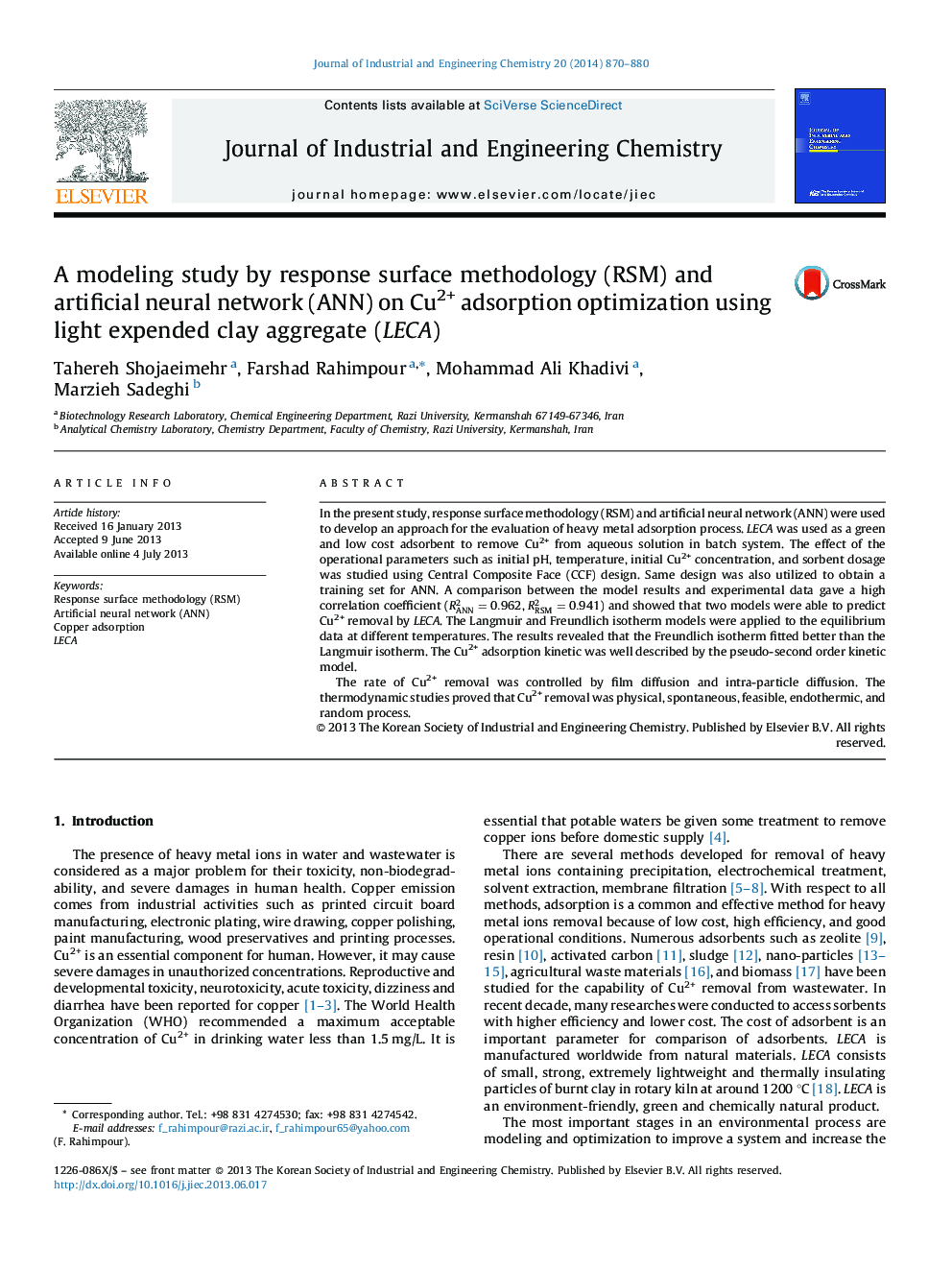| Article ID | Journal | Published Year | Pages | File Type |
|---|---|---|---|---|
| 228805 | Journal of Industrial and Engineering Chemistry | 2014 | 11 Pages |
In the present study, response surface methodology (RSM) and artificial neural network (ANN) were used to develop an approach for the evaluation of heavy metal adsorption process. LECA was used as a green and low cost adsorbent to remove Cu2+ from aqueous solution in batch system. The effect of the operational parameters such as initial pH, temperature, initial Cu2+ concentration, and sorbent dosage was studied using Central Composite Face (CCF) design. Same design was also utilized to obtain a training set for ANN. A comparison between the model results and experimental data gave a high correlation coefficient (RANN2=0.962, RRSM2=0.941) and showed that two models were able to predict Cu2+ removal by LECA. The Langmuir and Freundlich isotherm models were applied to the equilibrium data at different temperatures. The results revealed that the Freundlich isotherm fitted better than the Langmuir isotherm. The Cu2+ adsorption kinetic was well described by the pseudo-second order kinetic model.The rate of Cu2+ removal was controlled by film diffusion and intra-particle diffusion. The thermodynamic studies proved that Cu2+ removal was physical, spontaneous, feasible, endothermic, and random process.
Graphical abstractFigure optionsDownload full-size imageDownload as PowerPoint slide
